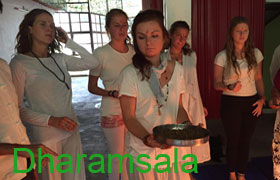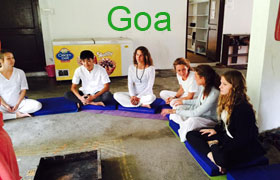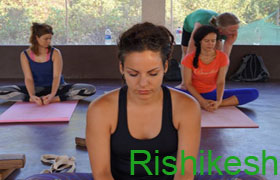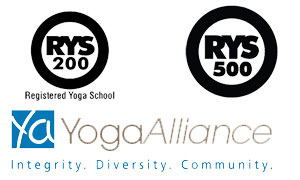Course Structure
A daily teaching practice class is devoted to teaching you how to teach asanas and pranayama. A daily asana practice class gives you the opportunity to practice your own asanas and will help to build the good habit of practice. The daily in-depth practice with individual corrections comprises:
- Sun salutation
- 12 basic yoga postures
- 100 asana variations, from intermediate level to advanced
- Postural alignment
- Deep relaxation with autosuggestion
- Release of blocked energy
- Training sessions for all age groups
Benefits of asanas:
- Control emotions
- Improve power of concentration
- Rid the body of excess fat
- Enhance physical fitness
- Relieve chronic ailments such as constipation, rheumatism, stomach complaints
- Stimulate circulation
- Stabilise thyroid functions
- Keep muscles youthful and supple into old age
Kriyas
- Tratak, Neti, Kapalabhati, Dhauti, Nauli and Basti: six classical purification exercises for the eyes, nose, air passages, oesophagus and stomach, abdominal organs and large intestine. Explanation and demonstration of the exercises and their effects. Individual instruction
Teaching practice
- How to teach the 12 basic postures and breathing exercises to beginners and intermediate students
- Setting up of a proper environment for class
- General pointers on teaching a class
- The Basic Sivananda class
- Beginners’ Course
- Advanced Postures
- Yoga for Children
- Yoga for Older Citizens
- Yoga for Pregnancy
- Relaxation
- Detailed correction workshops
- In the second half of the training course, participants will teach each other under the guidance of an experienced instructor
Meditation
- Guide to meditation
- What is meditation
- Why meditate
- Physical and mental meditation
- 12-step daily practice
- Effects of and experiences in meditation
- Mantras – spiritual energy in sound
- Mantra initiation (if desired)
Pranayama
- Expands capacity of the lungs
- Relaxes the nervous system
- Balances the two hemispheres of the brain
- Purifies the nadis (subtle energy channels)
- Awakens the inner spiritual energy
- Kapalabhati (lung cleansing exercise)
- Anuloma Viloma (alternate nostril breathing)
- Ujjayi, Surya Bheda, Bhastrika, Sitali, Sitkari, Bhramari
- Samanu (mental cleansing of the nadis)
- The three bandhas: Jalandhara, Moola, Uddiyana
Yoga anatomy and physiology
- Introduction to the major body systems
- The effects of asanas and pranayama on: the cardiovascular system, respiration, digestion, skeletal and muscular systems, endocrine system
- The eight systems of the body
- Yoga and physical culture
- Diet and nutrition
Hatha Yoga
- Ethical and moral principles
- Body – prana (life energy) – mind
- From control over the body to control over the mind and meditation
Bhagavad Gita
- Considered one of the greatest spiritual texts of the world, the Bhagavad Gita contains subtle and profound teachings and has a universality which embraces every aspect of human actions. It symbolises the solution of the eternal struggle between the spiritual and the material in every human being
- Study of both the text and Swami Sivananda’s commentary




